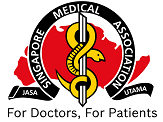Hayashi S, Maruoka S, Takahashi N, Hashimoto S
Correspondence: Dr Shinichi Hayashi, shayashi@med.nihon-u.ac.jp
ABSTRACT
Carotidynia is characterised by inflammation limited to the common carotid artery, which has been recognised as a distinct disease entity by advanced vascular imaging. Although most cases of carotidynia are idiopathic, we herein present a case of carotidynia after anticancer chemotherapy. A 64-year-old male patient received docetaxel followed by granulocyte-colony stimulating factor (G-CSF) for the treatment of lung squamous carcinoma. After the treatment, bilateral cervical pain developed. Vascular imaging, including magnetic resonance imaging, computed tomography and ultrasonography, showed characteristics specific for carotidynia. Although there was no strong confirmation using tests such as a challenge test, our observations suggest that docetaxel or G-CSF could be a causative drug triggering carotidynia.
Keywords: adverse drug reactions, carotidynia, docetaxel, granulocyte-colony stimulating factor
Singapore Med J 2014; 55(9): e142-e144; http://dx.doi.org/10.11622/smedj.2014127
REFERENCES
| 1. Fay T. Atypical neuralgia. Arch Neurol Psychiatry 1927; 18:309-15. | ||||
| 2. Roseman DM. Carotidynia. A distinct syndrome. Arch Otolaryngol 1967; 85:81-4. http://dx.doi.org/10.1001/archotol.1967.00760040083016 | ||||
| 3. Classification and diagnostic criteria for headache disorders, cranial neuralgias and facial pain. Headache Classification Committee of the International Headache Society. Cephalalgia 1988; 8 Suppl 7:1-96. | ||||
| 4. Biousse V, Bousser MG. The myth of carotidynia. Neurology 1994; 44:993?5. http://dx.doi.org/10.1212/WNL.44.6.993 | ||||
| 5. Headache Classification Subcommittee of the International Headache Society. The International Classification of Headache Disorders: 2nd edition. Cephalalgia 2004; 24 Suppl 1:9-160. | ||||
| 6. Stanbro M, Gray BH, Kellicut DC. Carotidynia: revisiting an unfamiliar entity. Ann Vasc Surg 2011; 25:1144-53. http://dx.doi.org/10.1016/j.avsg.2011.06.006 | ||||
| 7. Buetow MP, Delano MC. Carotidynia. AJR Am J Roentgenol 2001; 177:947. http://dx.doi.org/10.2214/ajr.177.4.1770947 | ||||
| 8. Schaumberg J, Eckert B, Michels P. Carotidynia: magnetic resonance imaging and ultrasonographic imaging of a self-limiting disease. Clin Neurardio 2011; 21:91-4. http://dx.doi.org/10.1007/s00062-010-0042-5 | ||||
| 9. Bendix N, Glodny B, Bernathova M, Bodner G. Sonography and CT of vasculitis during gemcitabine therapy. AJC Am J Roentgenol 2005; 184(3 Suppl):S14-5. http://dx.doi.org/10.2214/ajr.184.3_supplement.01840s14 | ||||
| 10. Azar L, Fischer HD. Perivascular carotid inflammation: an unusual case of carotidynia. Rheumatol Int 2012; 32:457-9. http://dx.doi.org/10.1007/s00296-009-1309-5 | ||||
| 11. Jabre MG, Shahidi GA, Bejjani BP. Probable fluoxetine-induced carotidynia. Lancet 2009; 374:1061-2. http://dx.doi.org/10.1016/S0140-6736(09)61694-9 | ||||
| 12. Naranjo CA, Busto U, Sellers EM, et al. A method for estimating the probability of adverse drug reactions. Clin Pharmacol Ther 1981; 30:239?45. http://dx.doi.org/10.1038/clpt.1981.154 | ||||
| 13. Ramsay LB, Stany MP, Edison JD, et al. Gemcitabine-associated large vessel vasculitis presenting as fever of unknown origins. J Clin Rheumatol 2010; 16:181-2. http://dx.doi.org/10.1097/RHU.0b013e3181df91ad | ||||
| 14. Dasanu CA. Gemcitabine: vascular toxicity and prothrombotic potential. Expert Opin Drug Saf 2008; 7:703-16. http://dx.doi.org/10.1517/14740330802374262 | ||||
| 15. Upton PD, Smith JG, Charnock DR. Histologic confirmation of carotidynia. Otolaryngol Head Neck Surg 2003; 129:443-4. http://dx.doi.org/10.1016/S0194-5998(03)00611-9 | ||||
| 16. Adiga GU, Elkadi D, Malik SK, Fitzpatrick JD, Madajewicz S. Abdominal aortitis after use of granulocyte colony-stimulating factor. Clin Drug Investig 2009; 29:821-5. http://dx.doi.org/10.2165/11530790-000000000-00000 | ||||


